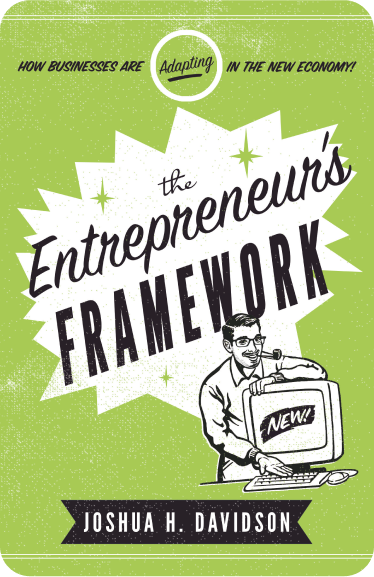Since our inception as a company in 2009, we have always been built around two unique business concepts — agility and operating remotely. We have been tackling the challenges of operating a company remotely for about 15 years!
Though some of our team members see each other multiple times per year ( this includes working together and having fun together in person) this has become less common as we grow. Today, our team members are spread throughout the United States and Pakistan,
Our team covers the four major time zones in the country (Eastern, Central, Mountain, and Pacific). We have team members from the Bay Area to New York City and Philadelphia.
Operating A Remote Company Is Possible!
So, what is the point of this blog post? It is to show that running a growing company, completely remotely, is not just possible — we are making it happen.
A lot of the current discourse surrounding remote work is about how it’s impossible to achieve. We disagree!
Just like with most operation styles, with all the perks come the downsides. In this post, we want to be transparent about the pros and cons.
Operating remotely is a business model that has allowed us to lay down a foundation to build Chop Dawg. We started doing this long before people were arguing about whether remote work is possible or not.
So, let’s take a look at the pros, cons, and our general process!
The Biggest Benefit of Operating A Remote Company
The biggest benefit right off the bat for us is that we can attract talent from anywhere in the world, without being restricted by their location.
For example, being able to hire the best programmers from San Francisco while at the same time, the best designers from New York City has its perks.
From a team member side of things, our team loves it. Outside of client and team meetings, you freely work your own hours. You get to work wherever and whenever you feel most comfortable.
As long as you can properly communicate and most importantly — produce results and meet deadlines, it doesn’t matter where someone is based. No need to clock in, clock out, or be constantly watched.
We find that ambitious and talented people can manage themselves to an extent when given clear objectives and expectations.
Remote Companies Simply Have Lower Overhead Costs
On the business side of things, the amount of savings we have as a company compared to other companies overhead is astronomical.
We simply don’t have a lot of the operating costs that other companies have.
We don’t pay to rent office space for our team to work from. We don’t pay any of the costs associated with providing things like office supplies for large numbers of people. Our people don’t waste time, money, and valuable energy commuting for hours every week. Our overhead costs are payroll, server costs, insurances and paying taxes every quarter. That is about it.
Speaking of commuting, data shows that the average US commute time is 52.2 minutes a day commuting to and from work. However, in many parts of the country, it is even worse.
According to the Inrix Global Scorecard, US states with the longest commutes have lost over 100 hours per year with over $1,500 per driver expended due to congestion.
With this in mind, it’s no mystery that our approach to work has always attracted many talented and forward-thinking people.
Our remote approach allows us to naturally keep our costs lower when quoting our clients as well. It also gives us more flexibility to invest in things such as company growth, advertising, marketing, branding, and events.
This has served us very well over the past decade or so.
However, We Must Be Honest About The Disadvantages
While being remote has some amazing benefits, it does offer a few disadvantages. We are still trying to conquer some of these and figure out better solutions too.
After all, when it comes to growing a business, meeting challenges via problem-solving is an ongoing process.
One of the biggest disadvantages is simply not working face-to-face. Though some of us will get together, or even work together for a period of time — it isn’t the same as being in an office, a main location working together.
As such, much more detail goes into internal communications and project management.
Also, it can be more difficult to build a company culture and build close relationships among team members when they are far apart. However, it is important to note that simply being in a central office space does not immediately guarantee these things.
Surely, we all have had in-office traditional working experiences where there were issues like a negative community culture, communication challenges, and lack of productivity.
Whether you are working remotely or in person, it takes work to develop a constructive company culture and positive working relationships.
Our Approach To Internal Communication
As a growing company, communication is vital to our long-term success. One of the most important things that we focused on in the beginning was how to build a strong foundation for our entire team to communicate to other team members easily.
We also thought it was vital to create a place for us to remain organized. We always have several projects developing at a time.
Over the years, we’ve experimented with different platforms such as Campfire, TeamSpeak, Google Hangouts, and HipChat. Each had positives but negatives always came too.
These days some of the tools we use are Slack for internal communications, Google Drive to track progress and collaborate, and Zoom for meetings.
You’ll notice that there have been significant changes over the years. This is normal, especially for a business that has been operating for about 15 years.
Whatever tools you choose, it is critical that your team is always on the same page. This is critical for maintaining smooth operations day to day. However, the security of your enterprise can also depend upon it.
Here is a real example from our company. We use Slack for most internal communications instead of email. Everyone on our team knows this.
This is important, because without one central standard method of internal communication, you can end up with different cliques of team members communicating in different ways. One department may be communicating through Facebook messenger and one through email or text message for example.
Why We Don’t Use Email For Most Internal Communication
Of course, different things will work better or worse for different organizations, and no advice is universal. However, with the rise of phishing scams and malevolent actors taking to email, we thought it would be best to not rely on email for internal communications.
We think this is safer both for us, and our many partners who we work with and support on their app development journies.
Over the last year or so, scammers have sent out emails to team members pretending to be our CEO several times. Scammers impersonating people you know via email or text message is a global issue right now.
However, everyone on our team knows that official messages from the CEO will not be delivered via this medium. This makes it much harder for scammers to take advantage of our team.
Regardless of what platform or method you choose, make sure that your whole team knows exactly where to communicate and how to keep track of their work. This is critical for both the smoothness of daily operations and overall security.
Final Thoughts on our Approach to Operating a Remote Company
We are living proof that it is more than possible to operate and grow a company remotely! With over a decade under our belt, we have started to make some significant achievements over the past several years.
In 2022 alone we were recognized by Inc. Magazine as part of their Power Partner Awards, and also as one of the Inc. 5000 fastest-growing private companies in the US.
Of course, there are struggles inherent to our business structure, but operating and growing any kind of business, regardless of its structure, comes with its unique challenges.
And at Chop Dawg, we believe that challenges are to be embraced and overcome! If you want to learn more about how to approach leadership in a remote environment, check out our blog post on the topic!
What do you think? Comment below.
Since 2009, we have helped create 350+ next-generation apps for startups, Fortune 500s, growing businesses, and non-profits from around the globe. Think Partner, Not Agency.
Find us on social at #MakeItApp’n®
















